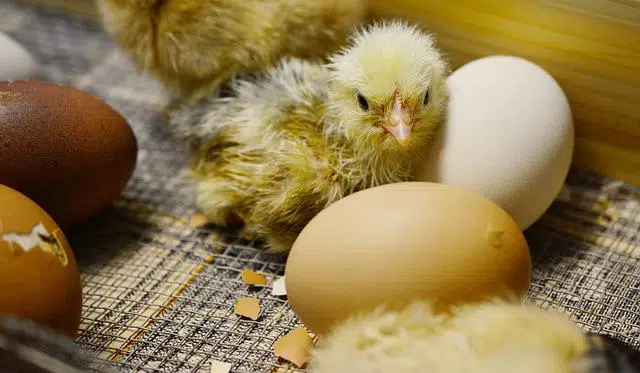
Biogenesis is the principle that establishes that every living being has its origin in another living being.
The notion of biogenesis is used in the field of biology to name the principle that indicates that a living organism always comes from another living organism . The term also refers to the manufacturing and processing of chemical substances developed by living beings.
Biogenesis, therefore, can refer to the process that leads to the "production" of a new living organism. A hen can lay an egg , from which a new hen is born. In turn, this second hen also generates other specimens through her own eggs. This is known as biogenesis: the birth of a living thing from another living thing.
Biogenesis theory
The theory of biogenesis states that life can only be generated from pre-existing life . In other words: life never comes from inorganic elements. The smallest and simplest visible unit that possesses independent life is the cell .
Continuing with these ideas , it can be noted that biogenesis maintains that there is no spontaneous generation of life from substances that are not alive. The opposite position is that put forward by the theory of spontaneous generation , which proposes the emergence of plants and animals from mud or the remains of organisms that at some point had life, for example.
The theory of spontaneous generation was dominant until the mid- 17th century , when it began to be shown that not even microorganisms arose spontaneously, but always came from another living being . Thus, biogenesis ended up being imposed as a principle to explain the origin of life .

Biogenesis replaced the theory of spontaneous generation.
Mitochondrial protein coding
A highly regulated process that requires the use of nuclear DNA to encode mitochondrial proteins is known as mitochondrial biogenesis, due to the small amount of proteins that mitochondrial DNA encodes. Of interest, there is a greater relationship between mitochondrial biogenesis and resistance exercise than with strength exercise.
A question that may arise when faced with this issue is how coordinated regulation is achieved, given that the location of the genes necessary for it is not the same for everyone. The answer to this question is based on the presence of molecules that work by sending messages between each compartment. According to a study carried out in 2009, the fundamental steps of this process are the following:
* the signaling reactions induced by physical exercise are activated;
* transcription factors and co-activating proteins are activated;
* the nuclear genes responsible for coding are regulated;
* mitochondrial RNA transcripts are stabilized and translated into protein precursors;
* precursors are transported within the relevant compartments;
* mitochondrial DNA is expressed;
* Gene products, both mitochondrial and nuclear, are assembled into complexes with several subunits inside the reticulum.
Main regulators of mitochondrial biogenesis
Although there are more regulators of mitochondrial biogenesis, among those known to date, the transcriptional coactivator PGC-1α, and the transcription factors NRF-1 , NRF-2 and Tfam stand out. Simply put, a transcription factor is a protein with the ability to bind to DNA in a specific area to regulate transcription, either through its activation or its inhibition.
Transcriptional coactivators, for their part, are also proteins , although they work indirectly, that is, they do not bind to DNA. Its role is that of an indispensable intermediary for the beginning of the transcription process, since it communicates the molecules and factors involved. These two classes of proteins act together with others to make the RNA polymerase do its job.
